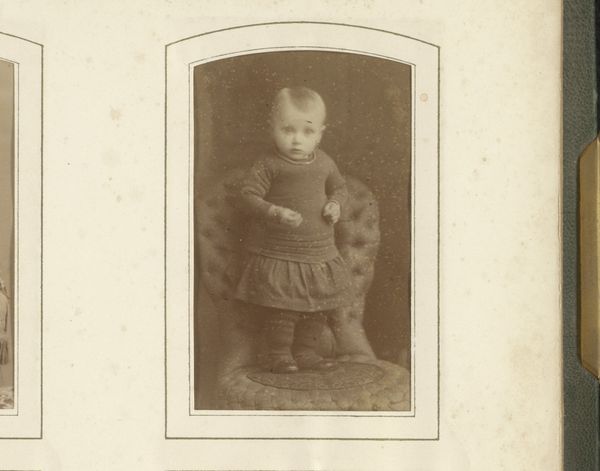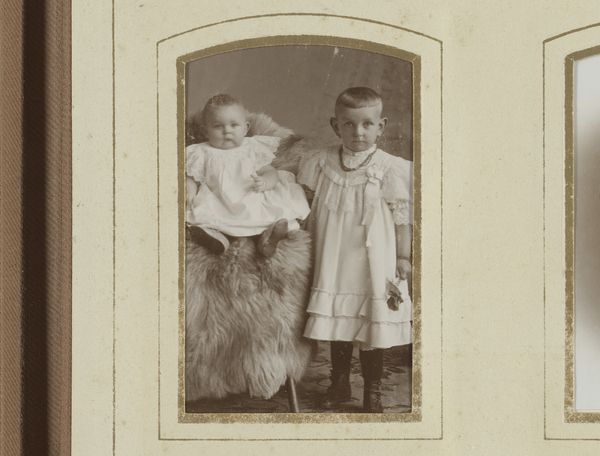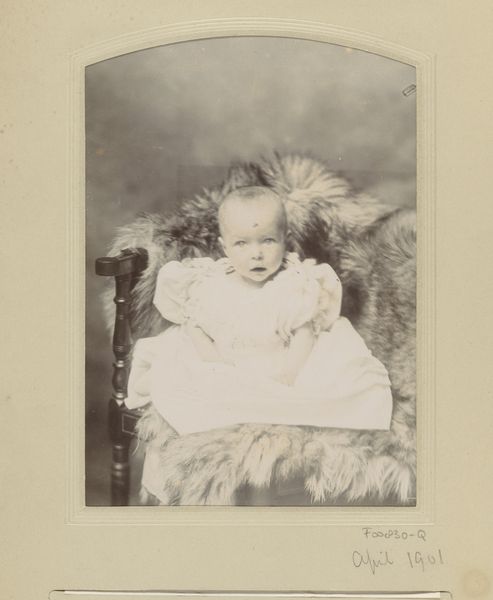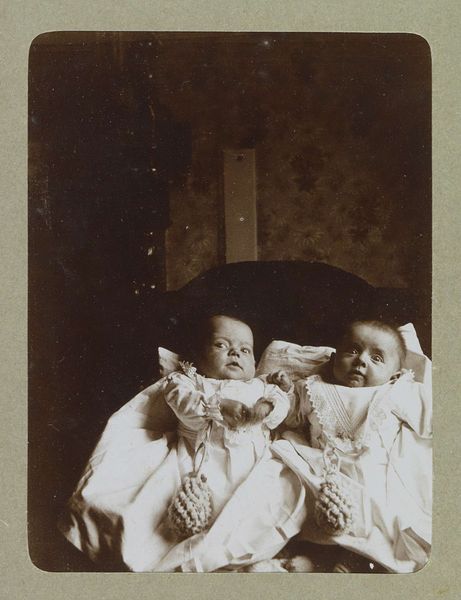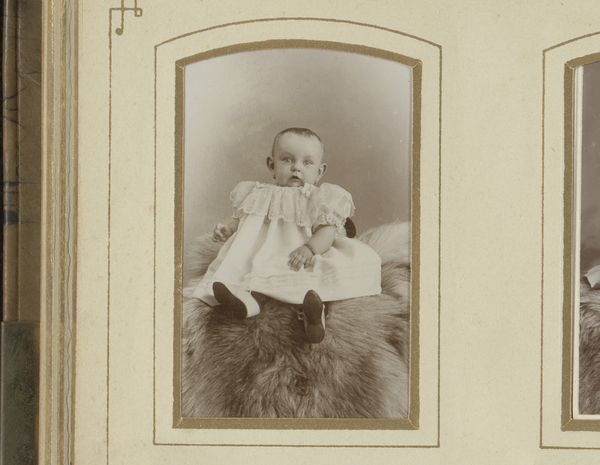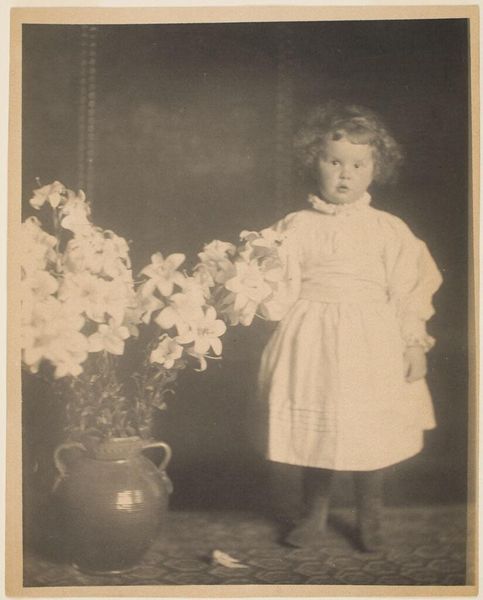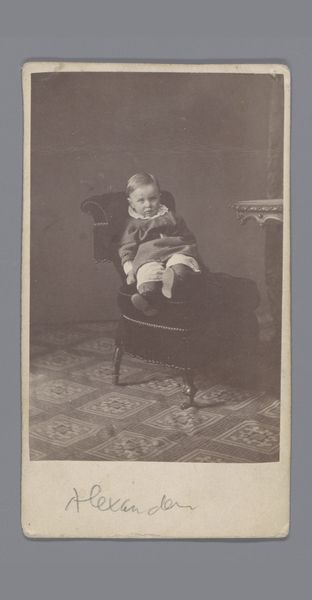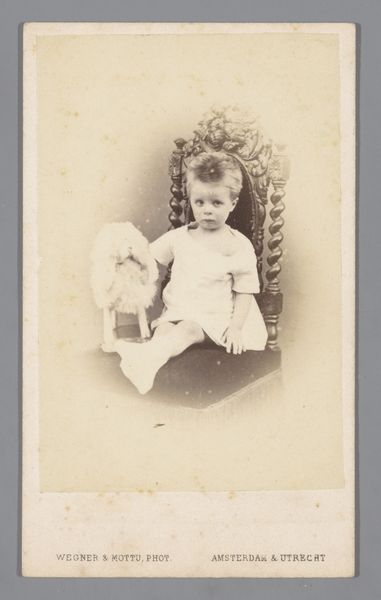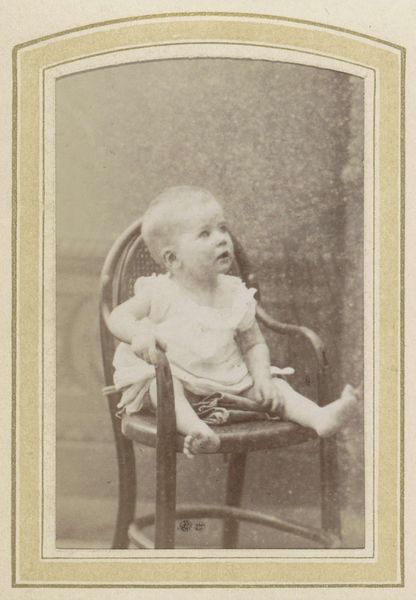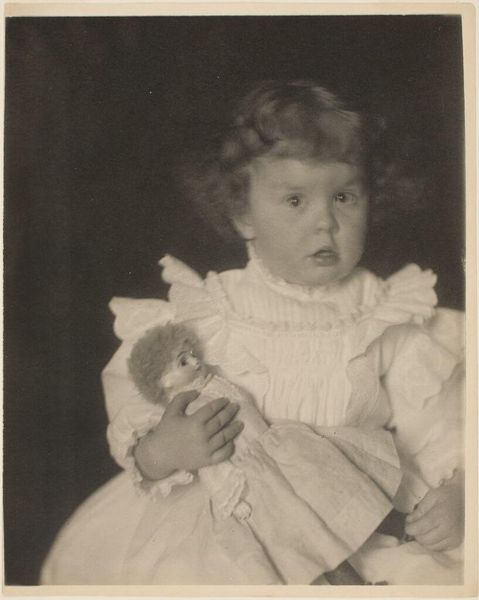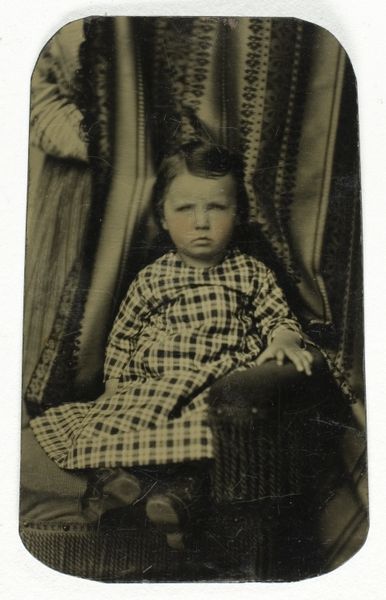
"This is our boy, dog and cat and I am sticking my nose through the back of the chair. Burns just woke up so he looks kind of mussed up." c. 1910
0:00
0:00
photography, gelatin-silver-print
#
portrait
#
still-life-photography
#
photography
#
historical photography
#
gelatin-silver-print
#
19th century
#
genre-painting
#
realism
Dimensions: image: 13.5 x 8 cm (5 5/16 x 3 1/8 in.) sheet: 13.8 x 8.9 cm (5 7/16 x 3 1/2 in.)
Copyright: National Gallery of Art: CC0 1.0
Curator: What an arresting image. This gelatin-silver print, dating from around 1910, presents such an intimate view into the domestic sphere. Note the detailed caption: "This is our boy, dog and cat and I am sticking my nose through the back of the chair. Burns just woke up so he looks kind of mussed up." Editor: Immediately, it strikes me as both humorous and slightly unsettling. The composition is wonderfully strange, that second peering face in the background paired with a blurry cat really make you work for it. I sense some powerful psychological projection and narrative fragmentation going on. Curator: Absolutely. Given the historical context of early 20th-century photography, there’s also an element of performance here. Families, seeking to document themselves, used this new technology to create particular types of representations—ones rooted in prevailing gender and class expectations. I’d say we should see this work in relation to broader constructs of domesticity. Editor: And consider how animals were deployed as symbols in similar portraiture! The dog represents loyalty and guardianship; the cat, perhaps, domestic comfort. Placed upon the chair, an animal throne is effectively built by and around these figures and subjects. Note that each member is strategically arranged and staged. There is symbolism that creates an allegory beyond the surface. Curator: Right! Furthermore, one can consider that someone else is included, looking at who's taking the photograph: an insider or an outsider? I read their physical position and lack of inscription into the formal portrait as an assertion of parental control and visibility in the construction of this nuclear family ideal. Editor: Yes, there's an emotional truth to this piece, as it reaches past pure realism into complex expressions that speak across the ages. Despite the antiquated setting and tonal qualities, our access is both instantaneous and emotionally layered. I suspect each generation re-interprets those symbols as it sees itself, to better grasp their cultural continuity across time. Curator: The enduring appeal and somewhat disturbing aspects of family portraiture definitely come to mind as a theme, here. This piece shows both the social demands of representing oneself and one's relatives with both the possibilities of control and candor. Editor: Absolutely. An image for every memory palace.
Comments
No comments
Be the first to comment and join the conversation on the ultimate creative platform.

